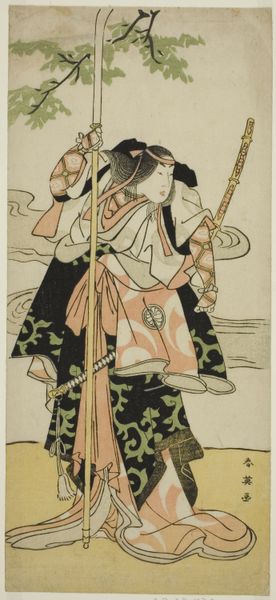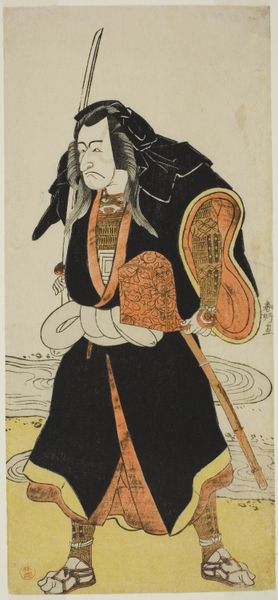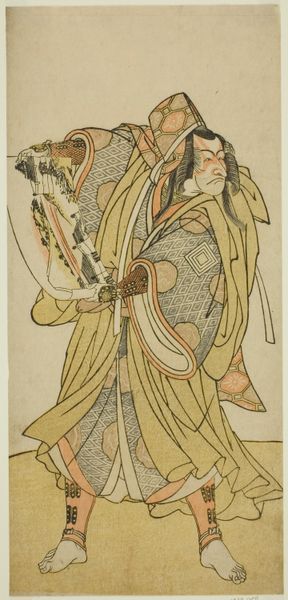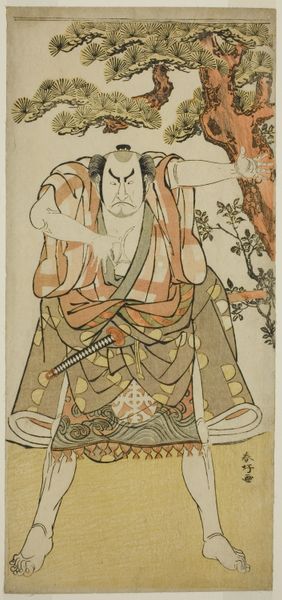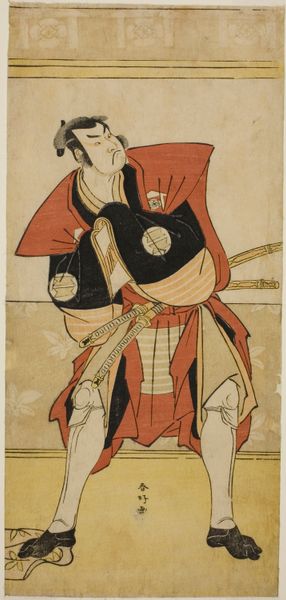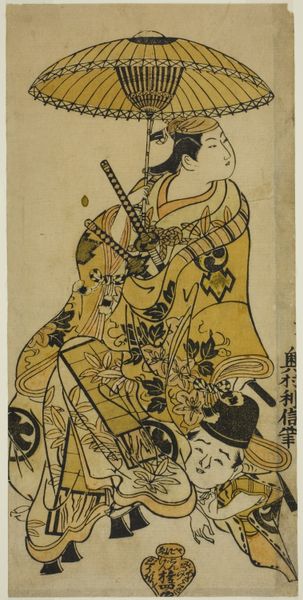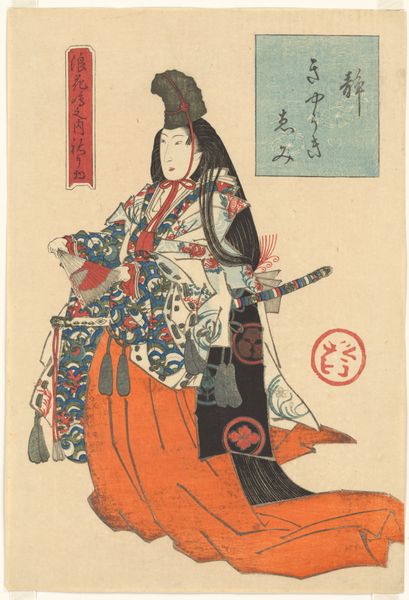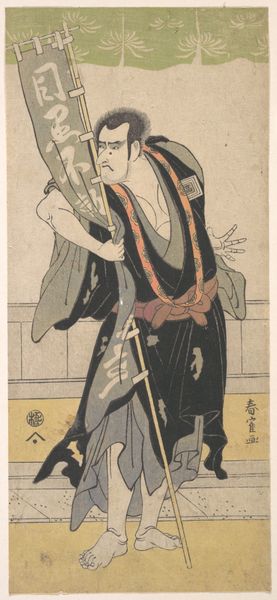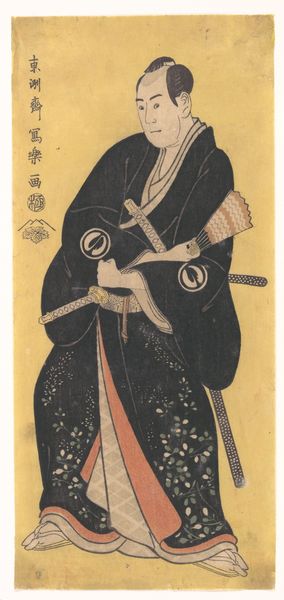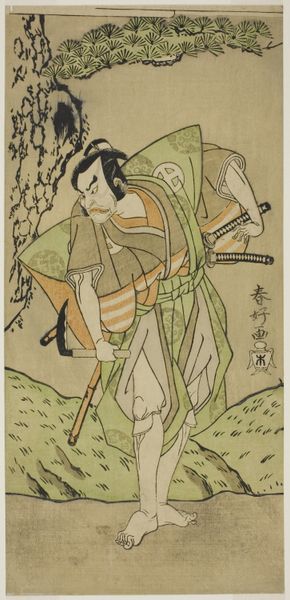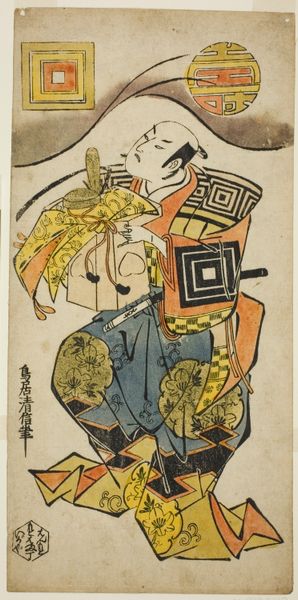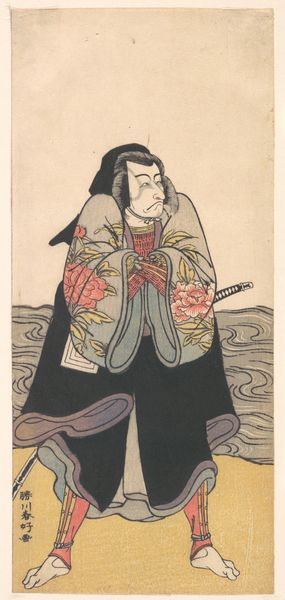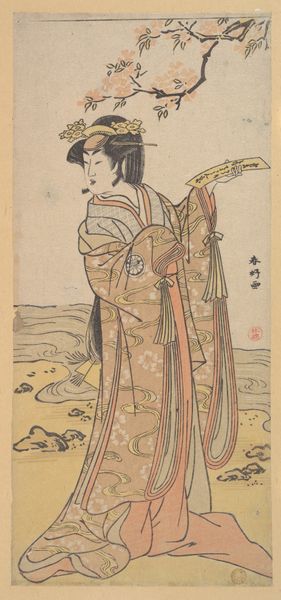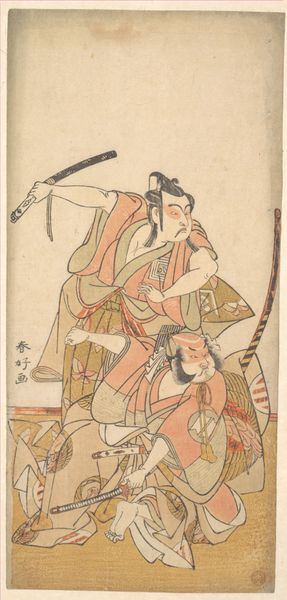
The Actor Ichikawa Danjūrō V as a Warrior Near the Seashore 1780 - 1800
0:00
0:00
print, woodblock-print
#
portrait
# print
#
asian-art
#
ukiyo-e
#
japan
#
figuration
#
woodblock-print
#
men
#
genre-painting
#
sword
Dimensions: H. 12 9/16 in. (31.9 cm); W. 5 7/8 in. (14.9 cm)
Copyright: Public Domain
Curator: This is Katsukawa Shunko’s woodblock print, "The Actor Ichikawa Danjūrō V as a Warrior Near the Seashore," dating from 1780 to 1800. Editor: It's striking how the bold patterns of his kimono contrast with the relatively plain background. There’s such an emphasis on costume and materiality, I’m wondering, what kind of dyes were available for creating the range of colors used here? Curator: That's a great question. It reveals the ingenuity of Japanese artisans. Also, Shunko was very active in portraying the actors of the Kabuki theater, a hugely influential social and cultural phenomenon during the Edo period. Editor: Indeed! Considering this is a woodblock print, the detail is amazing. Look at the layering of colors and shapes. I am also noticing that his hands seem abnormally large in relation to the rest of his body—perhaps there's something symbolic here? Curator: It’s more likely conventionalized for stage presence; kabuki is about bold gesture. His prominent hands would draw the eye to the symbolic cup he’s holding, amplifying the emotional intensity of his role. It's interesting how the theater reflected social dynamics and power. Editor: Right, power. What kind of labor went into producing and distributing these prints? Wood carving is highly specialized, and you’d need papermakers, printers. The scale of production indicates a pretty advanced economic system around this popular entertainment form. Curator: Absolutely. Ukiyo-e prints became widely accessible due to those production methods and commercial distribution, solidifying Kabuki actors' celebrity status across various social strata, it acted as a critical vehicle for disseminating style and values, if we see fashion from this perspective as form of cultural production. Editor: I like that framing—fashion as cultural production. Makes me think differently about it. I hadn't considered all those hands and specialized processes that brought the actors image and persona outside the theater, so vividly and fashionably into public consciousness. Curator: Exactly! It’s not just art; it's an industrial process intertwined with cultural identity and performative social meaning, we have to see how these pieces create social identity outside its own means, creating social interactions. Editor: Thank you for clarifying its deep social, political, and aesthetic role within 18th-century Japanese society. I found thinking through it materials and modes of making equally elucidating, they inform the image, influence circulation, and constitute our perception.
Comments
No comments
Be the first to comment and join the conversation on the ultimate creative platform.
